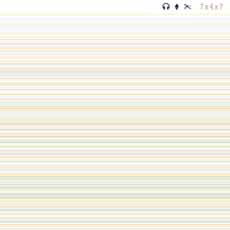
7X4X7
Schwimmer | cs013
Space
as a musical parameter is something that has long been neglected in recordings
of acoustic improvised music. Since, dynamic, attack, sound-color, rythm
and duration are commonly regarded as the elements that "constitute"
and give form to what you find in such a recording, the feeling and the
use of space has been seldom fully considered.
In this extent "Space" has been commonly regarded as an "effect"
that could be added to a work in the postproduction phase.
The working practice of the Berlin based ensemble "Schwimmer",
contrary to the prevelant use of space in musical terms, is focused on
the conscious handling of space perception in sound as one of the most
determining elements of the musical discourse.
The four members of "Schwimmer" use microphones and loudspeakers
in creative, unconventional ways. Close miking, multiple miking, spreading
many loudspeakers throughout the room, all strategies which are utilized
by "Schwimmer"and work to alter the listening relation between
the players and listeners by displacing and partially isolating them,
as well as letting their instrumental practices "explode" through
the virtuosistic and massive use of noise and extended techniques.
The actual space of the performace is each time manipulated allowing for
the creation of illusory spaces within the perception of the listener.
This recording features one of those strategies : A player (clarinettist
Michael Thieke) played and recorded a seven minute long solo. A second
player overdubbed a seven minute long solo over this statement while listening
to it. A third musician overdubbed onto the two previous tracks a third
segment and so on in a chain reaction that leads to a longer structure
(which could be reconstructed by those willing to do so, through the amazingly
detailed graphic description on the cd's jacket, an artwork in itself).
Due to accurate and close miking, and to the separation of tracks, every
instrument seems to refuse being located "somewhere" and starts
instead to become the illusory space wherein it is played.
Many fine textures emerge, developing fluidly throughout the full length
of the cd. The detached and out-of-synch nature of the reactions between
the players, produce a wide sense of freedom in musical terms, lightness
and abstraction though collective listening and interaction seems always
possible, never frustrated.
For those who think that improvised music with acoustic instruments has
lost its focus and the ability to renew itself in the electro-acoustic
era, may find through this recording a fine and mature occasion to change
their opinion.
Alessandro Bosetti, June 2004